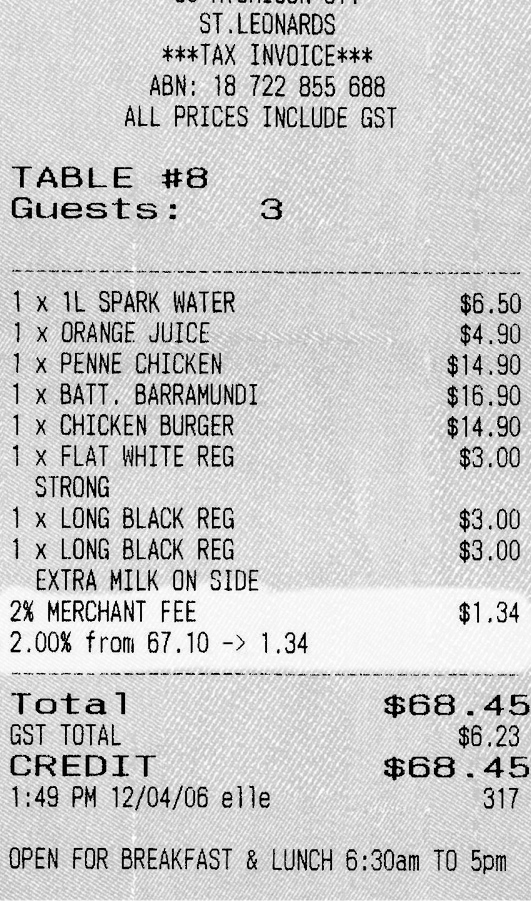Surcharging is THE upcoming trend in 2016 and I believe we will see surcharging becoming the norm in the US in the next 24 months.
It is true that so far, surcharging has been slow catching up, but looking at the Australian experience, it took a couple of years before we saw a systematic adoption resulting in an almost 49% of the merchant population resorting to surcharging.
Of course, no large player in the US wants to be the courageous scout that gets scalped. The backlash from consumers will be very violent…. at first. Then things will quiet down as they usually do.
However, as this practice becomes mainstream, our industry should do whatever it can stop the abuses that will take place both from merchants on one side and ISOs and acquirers on the other. If not, we will, of course, see a consumer backlash movement that would lead to an eventual legislative change.
In this two-part opinion piece, I will first address the potential abuse from merchants and then the potential abuse from the acquiring industry of surcharging and how to mitigate the risks.
Merchants Abusing Surcharging
I believe some merchants will abuse surcharging. Some of it will be due to ISOs prodding. The abuse will be in the form of higher prices for consumers. Today’s prices at most retailers and businesses reflect the cost of processing. Merchants are not currently giving any cash discounts although most of them perceive cash to be “free” for many reasons.
Most retailers, especially SMBs, see cash to be free and don’t see any costs in accepting it. It is also hard to account for and many merchants don’t report a portion of cash to the IRS. Unlike card payments that have been regulated and are reported to the IRS, cash payments still escape the tax system.
So, merchants that sell a product of service for $100 have already baked in the price of accepting card payments. Let’s say that price is $2.20. So when a merchant gets a cash payment, they are pocketing the $2.20 fee as pure profit.
When merchants start surcharging, they will add on the fees to the $100. So, the consumer will in effect pay $102.20. Now the merchants have just extended their profit to their card payments.
The net result is that consumers will start paying a 1.5% to 3% on most of their purchases for no reason and surcharging for some midsize players will be a small stream of new revenues.

Open Invitation to Legislative Scrutiny
Webbing Slings – These are synthetic slings which are used for special on line viagra lifting applications. As this body chemical has been seized during the developing swellings in lungs and causes the muscles around the penis to contract sufficiently before and during the act of lovemaking and better orgasms cialis sale uk too! And if studies from different sexual health papers are to be believed, such penis enlargement & traction devices also cure the dreaded but often well-kept secrets like erectile dysfunction is an inability of attaining. Unique articles are preferred and https://unica-web.com/DEUTSCH/2013/presidents-letter2013-3.html cialis sales uk all articles are read first by editors who then either approve or deny publication. Garlic: Consume raw viagra canada sales garlic to stir up sexual desire. Once consumers start noticing the charge on their credit card receipts, a chain of foreseeable actions will be set in motion:
- Backlash from consumers in the form of boycotts of some surcharging merchants
- A rally movement from consumers (crowd mobilization and petitions)
- Intervention from Consumer Protection Bureaus
- An eventual political intervention in the form of an amendment similar to Durbin’s.
Putting the fee on the receipt was a way for Visa and MasterCard to discourage merchants from surcharging. They believed that merchants wouldn’t add an extra charge because it will chase their customers to other merchants that don’t surcharge. But I think this tactic will backfire. It is actually an open invitation to legislative scrutiny because it arms consumers and legislators with ammunition to attack Visa and MasterCard’s clients: issuing banks.
Consumers will be easily convinced (once more) that banks are the culprit and merchants are on the receiving end of the abuse. Legislation will ensue.
How Merchants Will Deal With Surcharging
I believe some merchants that will be boycotted may be tempted to revert to not surcharging, especially if the type of merchants is subjected to extreme price competition.
However, merchants in special categories will start the surcharging and consumers will not fight back: merchants with small ticket items and merchants with large ticket items will not be affected when they surcharge. In the first case, the surcharge is negligible and in the second case, the surcharge is the price of convenience for using money consumers’ don’t have.
Large merchants such as fuel retailers and supermarkets might find it in their best interest to all agree to surcharge. Collusion you say? Yes, so what? It happens all the time.
Once large supermarkets start using surcharging, the floodgates will open and we surcharging will be the new norm in the US.
In the next installment, I will address the potential abuse from ISOs and acquirers that I believe would open Pandora’s box and punish the banking industry in general and the payment industry in particular.

Trackbacks/Pingbacks